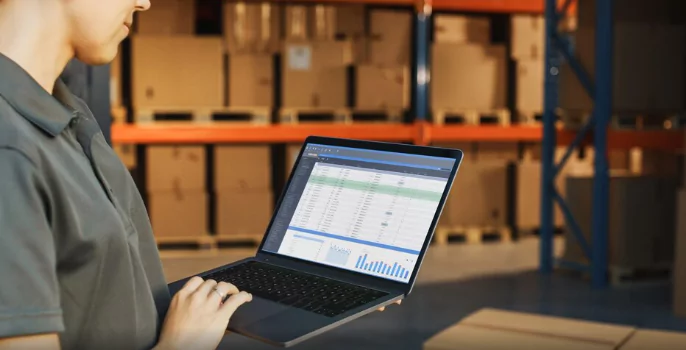17 Mar

A Warehouse Management System (WMS) is more than just software for tracking inventory; it is a powerhouse that can transform supply chain operations. Yet, many businesses fail to leverage its full potential. From Supply Chain Optimization to E-commerce and Order Fulfillment, the right WMS can uncover hidden efficiencies, reduce costs, and improve productivity. This article explores how businesses can maximize their warehouse potential using innovative strategies and technology.
- How Does a Warehouse Management System Improve Supply Chain Optimization?
- Why is Inventory Management the Backbone of Warehouse Operations?
- What Role Does Technology Play in Modern Warehouse Operations?
- How Do 3PL and 4PL Solutions Transform Logistics?
- How Can E-commerce and Order Fulfillment Be Optimized?
- What Are the Best Practices for Logistics and Distribution?
- Why is Packaging and Delivery Services Crucial in Warehousing?
- How Can Businesses Achieve Better Inventory and Supply Chain Management?
- What Are the Future Trends in Warehouse Management?
- Conclusion: Are You Unlocking the Full Potential of Your Warehouse?
How Does a Warehouse Management System Improve Supply Chain Optimization?
A well-integrated Warehouse Management System is crucial for Supply Chain Optimization. It connects multiple processes, ensuring real-time tracking, seamless communication, and reduced inefficiencies. By automating warehouse workflows, businesses can improve picking accuracy, minimize stock discrepancies, and speed up order fulfillment. Additionally, WMS analytics provide insights into demand trends, helping companies prevent overstocking or stockouts, ultimately enhancing supply chain efficiency.
Why is Inventory Management the Backbone of Warehouse Operations?
Without efficient Inventory Management, warehouses can quickly become chaotic. Proper inventory control ensures that products are stored, picked, and shipped with accuracy. Advanced Warehouse Technology and Operations have made it possible to use AI-driven forecasting tools, RFID tracking, and barcode scanning to streamline inventory tracking. Businesses that embrace smart Inventory and Supply Chain Management solutions reduce waste, cut costs, and enhance customer satisfaction.

What Role Does Technology Play in Modern Warehouse Operations?
The future of warehousing lies in automation and intelligent systems. Warehouse Technology and Operations include robotics, AI-driven sorting systems, and IoT-enabled tracking tools that enhance efficiency. With automated storage and retrieval systems (AS/RS), warehouses can process large volumes of goods with minimal human intervention. These innovations not only improve order accuracy but also optimize space utilization, reducing overhead costs.
How Do 3PL and 4PL Solutions Transform Logistics?
Outsourcing logistics has become a strategic move for businesses looking to scale. 3PL and 4PL Solutions provide expert handling of warehouse operations, allowing businesses to focus on growth. Third-party logistics (3PL) providers manage storage, transportation, and order fulfillment, while fourth-party logistics (4PL) providers take a more strategic role, overseeing the entire supply chain. Companies that leverage these solutions gain access to advanced Logistics and Distribution networks without heavy infrastructure investments.
How Can E-commerce and Order Fulfillment Be Optimized?
With the surge in online shopping, E-commerce and Order Fulfillment have become key aspects of warehouse operations. A strong Warehouse Management System enables real-time inventory tracking, seamless order processing, and fast delivery. Features like automated sorting, AI-powered demand forecasting, and robotic pick-and-pack systems help businesses handle high order volumes with accuracy and speed. By optimizing fulfillment processes, companies can boost efficiency and customer satisfaction.
What Are the Best Practices for Logistics and Distribution?
Efficient Logistics and Distribution require meticulous planning and execution. Businesses that optimize their distribution channels can reduce costs and improve delivery times. A data-driven Supply Chain Optimization strategy includes route planning, real-time shipment tracking, and automated fleet management. Advanced logistics software helps businesses select the most efficient shipping methods, minimizing transit times and ensuring timely deliveries.
Why is Packaging and Delivery Services Crucial in Warehousing?
Packaging isn’t just about protecting products; it plays a vital role in branding, sustainability, and cost-efficiency. Smart Packaging and Delivery Services focus on reducing material waste while ensuring items arrive safely. Automated packaging solutions, eco-friendly materials, and AI-driven packaging optimization help businesses enhance efficiency and reduce costs. Additionally, optimized packaging designs can improve warehouse space utilization and lower shipping expenses.
How Can Businesses Achieve Better Inventory and Supply Chain Management?
Successful Inventory and Supply Chain Management requires accurate demand forecasting, efficient storage solutions, and streamlined order fulfillment. By integrating AI and data analytics, businesses can predict demand fluctuations, reduce excess inventory, and improve order accuracy. A well-implemented Warehouse Management System ensures real-time inventory visibility, automated stock replenishment, and efficient warehouse layout planning.

What Are the Future Trends in Warehouse Management?
The warehousing industry is continuously evolving, with emerging technologies shaping its future. AI-powered automation, blockchain for transparent supply chains, and drone-based deliveries are revolutionizing Warehouse Technology and Operations. Additionally, machine learning algorithms are helping businesses optimize storage space, reduce errors, and enhance forecasting accuracy. The future of warehousing lies in agility, automation, and data-driven decision-making.
Conclusion: Are You Unlocking the Full Potential of Your Warehouse?
Many businesses underutilize their Warehouse Management System, missing out on opportunities for efficiency and growth. By integrating advanced Inventory Management, adopting 3PL and 4PL Solutions, and optimizing Logistics and Distribution, companies can unlock hidden potential within their supply chains. Stacketlens is dedicated to providing cutting-edge warehousing solutions that drive efficiency, scalability, and profitability. Now is the time to rethink your warehouse strategy and embrace the future of smart warehousing.

